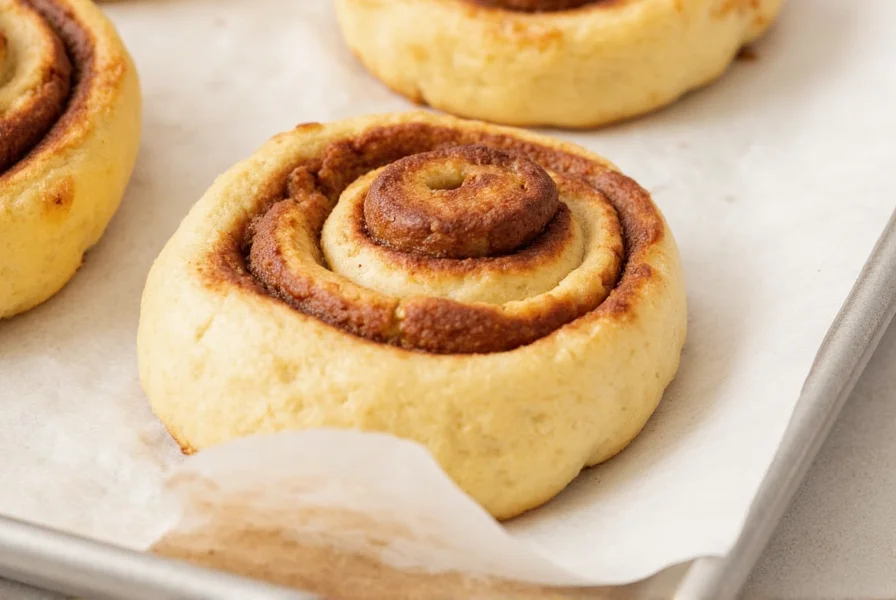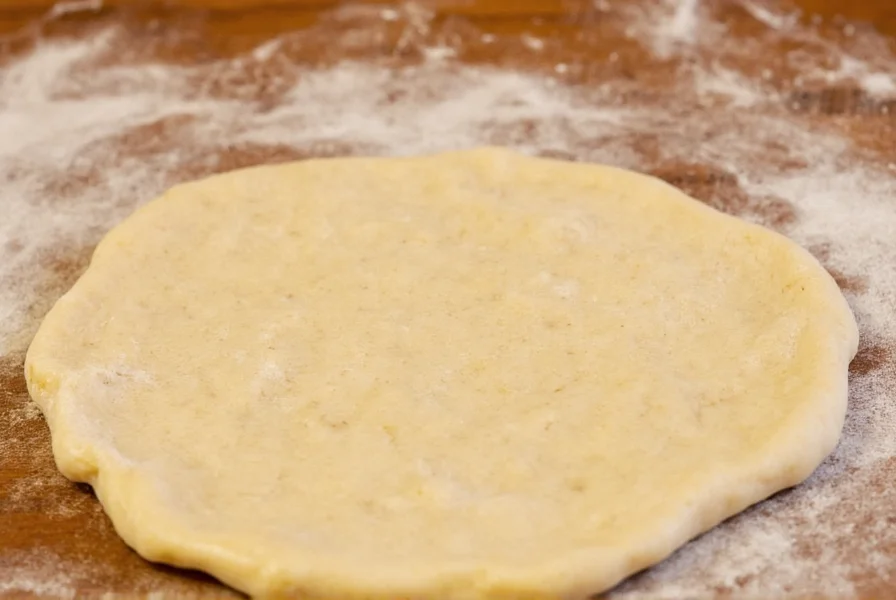Creating bakery-quality cinnamon rolls at home starts with mastering the dough. This comprehensive guide delivers a reliable, tested cinnamon roll dough recipe that produces consistently soft, flaky results. Whether you're a beginner baker or looking to refine your technique, these detailed instructions address common pitfalls and provide professional insights you won't find in basic recipes.
Why This Cinnamon Roll Dough Recipe Works
Most home bakers struggle with cinnamon roll dough that's either too dense or collapses during baking. The secret lies in balancing yeast activity with proper gluten development. This easy homemade cinnamon roll dough recipe uses a two-rise method that ensures optimal texture without compromising flavor. Unlike many online recipes that skip crucial details, we specify exact temperatures and visual cues so you know precisely when your dough has reached the perfect consistency.
Essential Ingredients for Perfect Cinnamon Roll Dough
The quality of your ingredients directly impacts the final product. Here's what you need and why each component matters:
| Ingredient | Amount | Why It Matters |
|---|---|---|
| All-purpose flour | 3 1/4 cups + extra for dusting | Provides structure; bread flour creates too much gluten for tender rolls |
| Active dry yeast | 2 1/4 teaspoons (1 packet) | Ensure freshness; test in warm liquid before use |
| Whole milk | 1/2 cup, warmed to 110°F | Fat content creates richer texture than skim milk |
| Unsalted butter | 1/4 cup, softened | Adds flavor and tenderness; don't substitute margarine |
| Large egg | 1 | Binds ingredients and contributes to browning |
Step-by-Step Cinnamon Roll Dough Instructions
Preparing the Dough
- Activate the yeast: Combine warm milk (110°F is critical—too hot kills yeast, too cold won't activate it), 1 tablespoon sugar, and yeast. Wait 5-10 minutes until foamy.
- Mix wet ingredients: Add softened butter and egg to yeast mixture, stirring until combined.
- Combine dry ingredients: Whisk flour, remaining sugar, and salt in a large bowl.
- Form the dough: Gradually add wet ingredients to dry, mixing until a shaggy dough forms. Knead 8-10 minutes by hand or 5-7 minutes with dough hook until smooth and elastic.
First Rise (Bulk Fermentation)
Place dough in lightly greased bowl, cover with damp cloth, and let rise in warm spot (75-80°F) for 1-1.5 hours, or until doubled. Pro tip: For more complex flavor, refrigerate overnight for a slow, cold rise.

Shaping the Rolls
- Roll out dough: Punch down risen dough and roll into 16x12 inch rectangle on floured surface.
- Apply filling: Spread softened butter evenly, then sprinkle cinnamon-sugar mixture (1/2 cup sugar + 2 tbsp cinnamon).
- Roll tightly: Starting from long edge, roll dough into log. Pinch seam to seal.
- Cut rolls: Use dental floss or unflavored thread to slice into 12 equal pieces (prevents squishing).
Second Rise and Baking
Place rolls in greased 9x13 inch pan, cover, and let rise 45-60 minutes until nearly doubled. Bake at 350°F for 22-25 minutes until golden brown. Don't skip: Test for doneness by checking internal temperature (190°F indicates perfect bake).
Troubleshooting Common Cinnamon Roll Dough Problems
Even experienced bakers encounter issues. Here's how to fix them:
- Dough won't rise: Check yeast freshness and liquid temperature. Create a warm environment by placing dough in oven with light on.
- Rolls collapse after baking: Underbaking or insufficient second rise. Ensure rolls are nearly touching before baking and reach proper internal temperature.
- Dough too sticky: Add flour 1 tablespoon at a time during kneading, but avoid adding too much which creates dry rolls.
- Rolls too dense: Over-kneading develops too much gluten. Stop when dough passes the "windowpane test" (stretches thin without tearing).
Storage and Freezing Instructions
Proper storage maintains freshness:
- Room temperature: Store in airtight container for up to 2 days
- Refrigerator: Keep up to 5 days; reheat in microwave 10-15 seconds
- Freezing unbaked dough: After cutting, place rolls on parchment-lined baking sheet, freeze solid, then transfer to freezer bag. Bake from frozen, adding 5-8 minutes to baking time
- Freezing baked rolls: Cool completely, wrap individually, and freeze up to 3 months. Thaw at room temperature and refresh in 300°F oven for 5 minutes
Variations for Different Dietary Needs
This basic yeast cinnamon roll dough recipe adapts well to special diets:
- Gluten-free: Substitute 1:1 gluten-free flour blend and add 1/2 teaspoon xanthan gum
- Vegan: Replace milk with almond milk, butter with coconut oil, and egg with flax egg (1 tbsp ground flax + 3 tbsp water)
- Whole wheat: Substitute up to 50% of flour with white whole wheat flour for nuttier flavor
- Sticky buns: Add chopped pecans and replace cinnamon filling with brown sugar-pecan caramel sauce
Professional Tips for Bakery-Quality Results
Take your homemade cinnamon rolls to the next level with these chef-tested techniques:
- Temperature control: Keep ingredients at room temperature except for the milk, which must be warm to activate yeast
- Rolling technique: Roll dough tightly but gently to create distinct swirls without tearing
- Pan selection: Use a light-colored metal pan for even baking (dark pans cause over-browning)
- Cutting method: Dental floss creates cleaner cuts than knives, preventing rolls from squishing
- Timing: Bake rolls when they've nearly doubled but still feel slightly dense when gently pressed
Frequently Asked Questions
Can I make cinnamon roll dough ahead of time?
Yes, you can prepare cinnamon roll dough up to 3 days in advance. After the first rise, punch down the dough, wrap tightly, and refrigerate. When ready to use, let it come to room temperature (about 2 hours) before rolling and shaping. For best results with this make-ahead cinnamon roll dough recipe, complete the second rise at room temperature before baking.
Why did my cinnamon rolls come out flat?
Flat cinnamon rolls typically result from over-proofing during the second rise or insufficient oven spring. Ensure your rolls have risen just until nearly doubled (they should spring back slowly when gently pressed). Also verify your oven temperature with an independent thermometer, as an oven running too cool prevents proper rise during baking. Using this foolproof cinnamon roll dough recipe with precise timing avoids this common issue.
How do I prevent the filling from leaking out?
To prevent filling leakage in your cinnamon roll dough, leave a 1/2-inch border along one long edge when spreading the filling. Roll tightly but gently, and pinch the seam closed. When cutting, use dental floss rather than a knife to avoid compressing the roll ends. Placing a small amount of extra filling in the bottom of your baking pan catches any minor leakage and creates a delicious caramelized base.
Can I use instant yeast instead of active dry yeast?
Yes, you can substitute instant yeast for active dry yeast in a 1:1 ratio in this cinnamon roll dough recipe. The main difference is that instant yeast can be mixed directly with dry ingredients without proofing in liquid first. If using instant yeast, you may notice slightly faster rising times—check the dough 15-20 minutes earlier than the recommended rise time. Both types work well in this reliable cinnamon roll dough formula.
What's the ideal room temperature for dough rising?
The ideal temperature for cinnamon roll dough to rise is 75-80°F (24-27°C). At this temperature, yeast remains active without over-fermenting. If your kitchen is cooler, create a proofing environment by placing the covered dough in your oven with just the light on, or near a warm appliance. Avoid temperatures above 85°F, which can kill yeast and create off-flavors in your homemade cinnamon roll dough.











 浙公网安备
33010002000092号
浙公网安备
33010002000092号 浙B2-20120091-4
浙B2-20120091-4